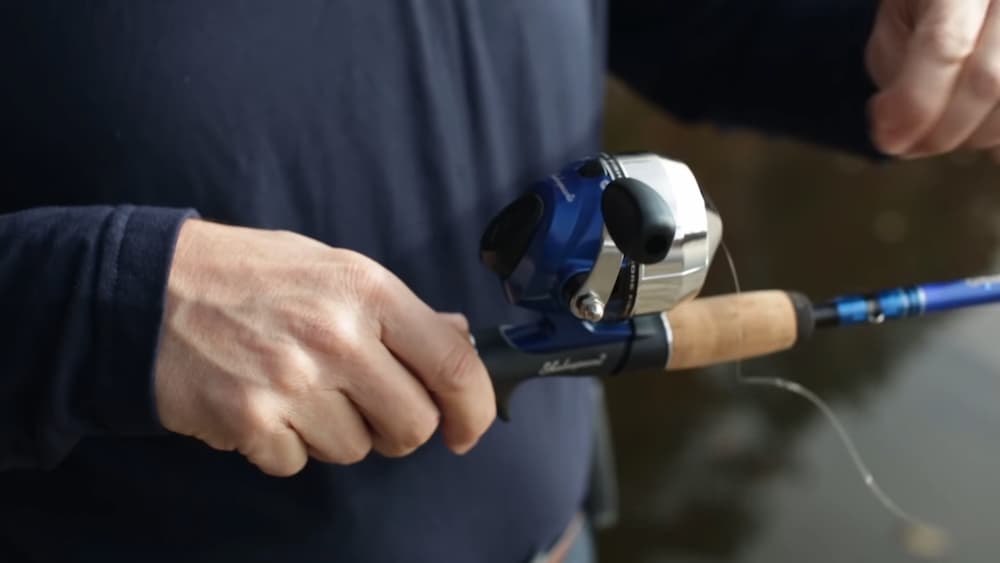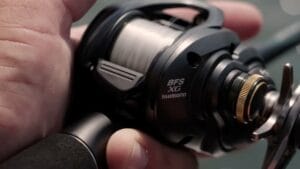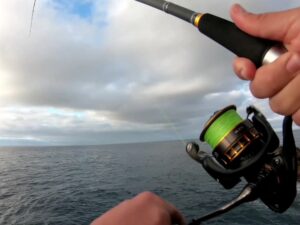A spincast reel is a type of fishing reel that is encased in a housing. The line is stored on a spool that is inside the housing. When you cast the line, the spool rotates and the line is released through the front of the housing. The spincast reel is a popular choice for novice anglers because it is easy to use and is not as likely to get tangled as other types of fishing reels.
The spincast fishing reel is a simple reel that is designed for easy use. The line comes out of a hole on the top of the reel, and the reel is designed to be on top of the rod with the guides pointing up towards the sky. There is a button on the reel that is used to release the line, and there is also a drag button that is used to adjust the tension on the line. To use the reel, the user first presses the release button and then winds the handle to reel in the line. The user can then press the trigger button to release the line and cast the lure.
History of spincast reels
The first spincast reel was invented in 1947 by R.D. Hull. He was a watchmaker who worked with the Zero Hour Bomb Company. The Zero Hour Bomb Company developed time bombs to be used when drilling for oil. Young’s reel was called the reel that wouldn’t backlash, which was the major problem of baitcasters at the time. It was an all metal reel with a cap that prevented line twists and backlashing. The reel was designed to be used with casting rods.
How Spincasters Work
Spincast reels work via an internal spool that spins much the same way that a spinning reel does. The line is wound around the spool at a horizontal angle with the spincast cap acting as the line guide.
In order to cast, you first push a button on the front of the reel, the spool is released, and you can then cast the line.
Once you release the button, the spool will automatically stop spinning and at that time, the line can then be reeled in by rotating the reel handle.
Who Are They Designed For?
Spincast reels are designed for people with little fishing experience, and they are also great for kids. The reel is easy to use and it is not difficult to mess up.
Spincast reels are designed for novice anglers or for anglers who do not want to deal with the hassle of other types of fishing reels. They are easy to use and are not as likely to get tangled as other types of fishing reels.
Why Aren’t They Popular?
Spincast reels are not as popular as other types of fishing reels because they are not as versatile. They are also not able to handle as much line or as heavy a fish as other types of fishing reels.
Advantages
There are several advantages to using a spincast reel:
- They are easy to use
- They are not as likely to get tangled as other types of fishing reels
- They are less expensive than other types of fishing reels
Spincast reels are a great budget option for people who want to start fishing, and they are also very easy to use.
Disadvantages
There are several disadvantages to using a spincast reel:
- They are not as versatile as other types of fishing reels
- They are not able to handle as much line or as heavy of a fish as other types of fishing reels
Spincast reels are not as durable as other types of reels, and they are not designed for large fish.
How To Use a Spincasting Reel
To use a spincast reel, first make sure that the line is properly wound around the spool. Next, push the button on the front of the reel to release the spool. Then, cast the line. Once you have released the button, the spool will automatically stop spinning and the line will be reeled in.
Recommended Maintenance
To maintain a spincast reel, regularly clean the housing and the spool. You should also oil the reel to keep it working properly. You should also check the line for tangles and knots, and fix them as needed.
Conclusion
Spincast reels are a type of fishing reel that is encased in a housing. The line is stored on a spool that is inside the housing. When you cast the line, the spool rotates and the line is released through the front of the housing. The spincast reel is a popular choice for novice anglers because it is easy to use and is not as likely to get tangled as other types of fishing reels.





